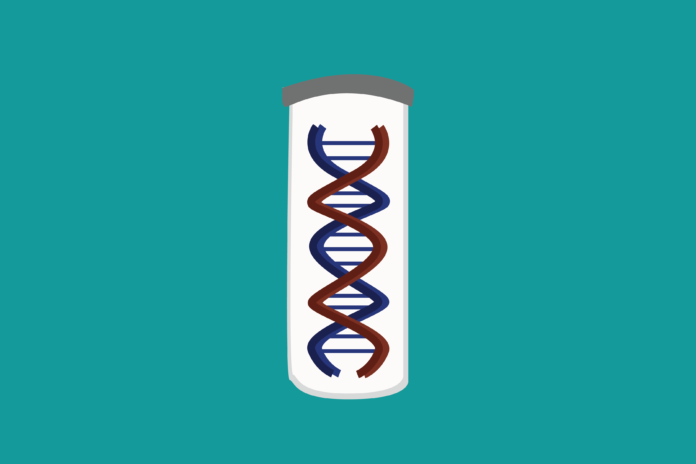UC Davis Mouse Biology Program embarks on gene variant projects to model rare diseases
When children are born with a rare diseases, their families may also navigate multiple care providers in search of a diagnosis. Often, genetic testing remains healthcare’s last resort.
The UC Davis Mouse Biology Program is celebrating its 20th anniversary with the Kids First Variant Project and Mutant Mouse Resource and Research Centers Variant Project, which investigates genetic variations found in human patients using mice.
When a patient experiences symptoms of unknown causes, doctors can ultimately refer them to a clinical geneticist. From there, the clinical geneticist can analyze a patient’s whole genome in search of likely factors causing their rare disease, such as variants of unknown significance (VUS) or genes of unknown significance (GUS).
“Human genetics and the relationship to disease is complicated because there are other factors involved, including complex genetic background, diet and the environment, which adds variability between people,” said Brandon Willis, the manager of the UC Davis Mouse Biology Program’s Murine Genetic Engineering Laboratory. “Our mice are isogenic [having similar genotypes] and have standardized care, so we can look into several VUS to determine whether they may be causative for rare diseases in a robust and low variability model system.”
Clinicians and researchers nominate variants for study to the UC Davis Mouse Biology Program.
“UC Davis is one of the few places that has a consortium of resources to produce guiding diagnostics targeted to individuals,” said Kristin Grimsrud, the associate director of Vivarium and Veterinary Services at the UC Davis Mouse Biology Program and project lead for the Human Disease Variant Modeling in Mice Project.
The Murine Genetic Engineering Laboratory searches for and identifies genes within the mouse genome matching the human gene of interest. From there, the Murine Genetic Engineering Laboratory uses CRISPR gene editing to create precise mutations within mouse embryos. CRISPR uses a guided template to pinpoint the gene of interest, cutting DNA with a protein to introduce a template containing the human variants and sealing the mouse genome with a human variant to investigate.
“Before we edit the mouse genome for the target variant using CRISPR, we also engineer silent mutations where you change the CRISPR recognition sequence,” said Taylor Ngo, a second-year genetics major. “That way, the CRISPR protein doesn’t cut the site again while only producing the desired change at the protein level.”
The Murine Vivarium Professionals superovulate female mice, harvesting their eggs for sperm fertilization.
“The Murine Targeted Genomics Laboratory can inject fertilized mouse eggs or use electroporation, which weakens the outside zone of a zygote to temporarily allow the CRISPR protein, guided template and other reagents inside to create edits,” said Joshua Wood, the Associate director of Laboratory Operations at the UC Davis Mouse Biology Program and project lead for the Kids First Variant Project. “Mouse zygotes are implanted into female mouse recipients.”
Sperm is cryogenically preserved by the Murine IVF and Cryo Laboratory to rederive mouse strains in the future.
The Murine Vivarium Professionals monitors the zygotes as they develop. After the engineered mouse pups are born, small samples of their ears or tails are taken to verify genetic editing.
The Murine Genetic Engineering Laboratoratory screens mouse pups for having one copy of the edited gene, then they are bred until they produce mice carrying both copies of the gene variants, modeling rare human diseases. The Phenotyping Center monitors each engineered mouse, investigating how human genetic variants shape the health of the mouse.
“Our mice are treated like patients, we target our tests towards phenotypes that would be present in human rare diseases,” Grimsrud said. “If a little boy had difficulty gripping a fork, then we would have the engineered mouse tested for grip strength and see if the mouse could grip a bar.”
The Mouse Biology Program’s optimized engineering and phenotyping processes allow it to efficiently operate, collaborating with UC Davis faculty and researchers across the country and internationally. Over the past 13 years, the Mouse Biology Program’s Knockout Mouse Project has saved United States taxpayers approximately 570 million dollars. They strive to continue this trend in the Kids First Variant Project and Mutant Mouse Resource and Research Centers Variant Project, saving tax dollars while investigating rare genetic conditions.
“If there are developmental delays during embryonic development that could lead to global impacts,” Grimsrud said. “One of the genes we are looking into is CHAMP1, which is involved in early development. For children, it can lead to challenges in fine motor skills, speech and noise sensitivity. These children don’t interact well with others.”
At the moment, the Mouse Biology Program has successfully engineered seven mouse strains with human gene variants.
“A secondary goal is to potentially use these mice to test therapeutic interventions right away in the mouse, hopefully, to promote similar therapies based on a patient’s needs,” Willis said.
Written by: Foxy Robinson — science@theaggie.org




